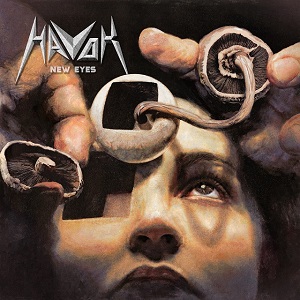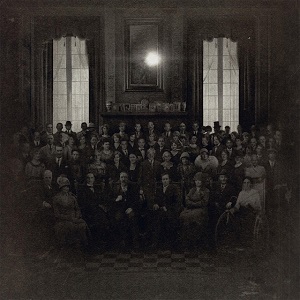How To Choose A Synthesizer For Beginners
October 24, 2021, 3 years ago

Many people would like to learn to play the piano but do not know where to start. An excellent option would be a synthesizer -a compact electronic keyboard musical instrument. It will allow you to master the basics of playing the piano and develop your musical abilities.
Children's Synthesizers
Small dimensions, reduced keys, and minimal functionality characterize a children’s synthesizer, as a rule. Models for children studying at a music school have a full-fledged keyboard and functions that are more extensive.
Synthesizers for Beginners
Synthesizers for beginners have a full-size keyboard (on average, 61 keys), have a complete set of necessary functions, and a training mode. A beginner performer who earns his living by musical accompaniment of feasts and various celebrations will need a synthesizer with auto-accompaniment –it will save you strength and allow you not to look pale.
How Do They Differ from Professional Devices?
An extended keyboard distinguishes professional synthesizers (from 61 to 88 keys), a complete set of additional functions (including an arpeggiator, sequencer, sampling, etc.), and very high sound quality.
Tips and Selection Criteria
When choosing a synthesizer, you need to know for what purposes you need this instrument –like a child's toy, training, or professional musical activity. The following criteria are most important.
Number and Size of Keys
As a rule, synthesizer keyboards cover 6.5 octaves or less. At the same time, you can play in inaccessible octaves thanks to the transpose function, which "shifts" the sound range. When choosing a tool, you need to proceed from your needs. A synthesizer with 61 keys and 5octaves is suitable for most tasks, but selecting a 76-key model for performing complex works is better.When buying a synthesizer for young children, it is better to choose the option with reduced keys, but you need to study music already on a full-fledged keyboard seriously.
Pressure Sensitivity and Stiffness Types
Synthesizers with this function react to the force of pressing the keys and, depending on it, sound louder or quieter –so the sound turns out to be "alive." Therefore, it is better to choose a model with "active" keys.
Models with insensitive keys are suitable only as a child's toy or for learning the basics of music.
The stiffness of the keys, in turn, can have three types:
● Unweightedkeys without resistance to pressing (available on children's and toy models);
● Semi-weighted, more complex keys (the best option forbeginners and amateurs);
● Weighted, similar to a traditional piano (for professionals).
Additional Features
● Learning function
The learning function allows you to learn the instrument faster and easier. A display shows the student the desired sequence of notes, and some models have backlit keys. It is also essential to have a metronome that sets the rhythm. A synthesizer with a learning mode is an excellent option for beginners. The learning functions will be handy for a novice musician. A rhythm-setting metronome is also helpful in training. The training mode, which is possible on synthesizers with backlit keys, is very effective.
● Polyphony
The more voices a polyphony has, the more notes it sounds at the same time. If you do not need sound effects, 32 voices will be enough. 48-64-voice polyphony will be required when using products and auto-accompaniment. For professionals, you might prefer the polyphony of up to 128 voices.
● Auto Accompaniment
The auto accompaniment function allows you to accompany an instrument with a melody, which simplifies the task for an inexperienced musician.
● Number of timbres
The presence of additional timbres gives the synthesizer the ability to simulate the sound of other instruments. This feature is helpful for musicians working in the studio and is suitable for entertaining children. For those who are learning to play the synthesizer, a large number of timbres is not necessary.
● Reverberation
With the help of the reverb effect, the natural critical sound fading is simulated, ason an acoustic piano.
● Arpeggiator
This function makes it possible to play a specific combination of notes by pressing one key.
● Sampling
Sampling is also an essential function for a studio instrument. Sampling allows you to record new timbres (samples) forfurther use independently.
● Sequencer
It is the ability to record music for its subsequent playback in the background.
● Connectors
Pay attention to the presence of analog and digital connectors on the synthesizer. The linear and microphone inputs will allowyou to pass an external audio signal through the synthesizer, with the overlay of selected sound effects, which can significantly enrich the capabilities of a DJ or soloist. The headphone output will allow you to fully engage with the synthesizer without interfering with the loud sound of others.Pay attention to the presence of a headphone jack –this will allow you to play the instrument at any time of the day without disturbing other people. Amateurs and professionals will also need linear microphone inputs (an external audio signal goes through the device) and USB/MIDI outputs for sound processing on a PC.
● Dimensions
For children, it is better to buy the lightest synthesizer, up to 5 kg. For those who often take the synthesizer with them, choosing a model weighing less than 15 kg is better. Professional tools usually have a more impressive weight.
Which synthesizer manufacturers are the best?
The highest quality synthesizers are Casio, Yamaha, Roland, Korg, Kurzweil. If you need a budget model, you should also pay attention to Denn, Medeli, Tessler.
Is it worth buying an expensive synthesizer as a first instrument?
It is better to buy models with a high cost if you already know how to play a synthesizer and are sure to continue making music. Beginners should stop at the models of the budget and mid-price segment.
Conclusion
You would be surprised if you knew how many people want to learn how to play the piano. There are many online courses for playing the piano. At first glance, all synthesizers seem to be the same and differ only in size and appearance. However, the functionality and sound quality of each model are different. Now you know what to look for when choosing a synthesizer for beginners. First, it is worth proceeding from your own needs and budget to not overpay for unnecessary functions. Then your first synthesizer will bring many positive emotions and introduce you to the magical world of music.











